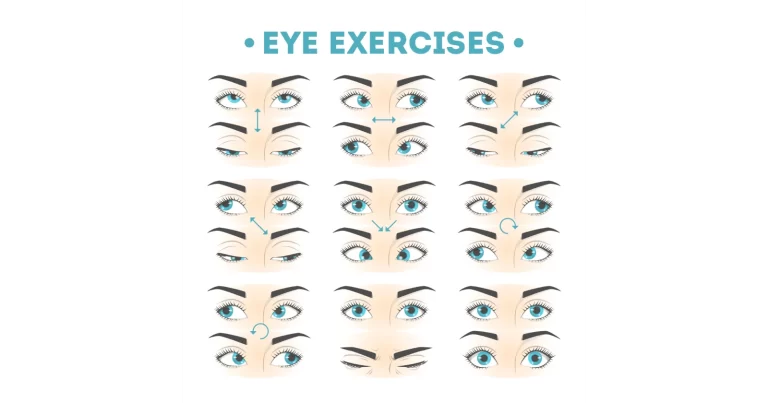Latissimus dorsi muscle strengthening exercise
Table of Contents
What is a Latissimus dorsi strengthening exercise?
Latissimus dorsi strengthening exercise is an important exercise to make your middle back powerful that has many health benefits and also reduces the risk of injury.
- The back includes some of the largest muscles in the anatomy, muscles which are working in everyday motions to support the body as well as the spine. The back muscles are also part of the muscles of the core, particularly the latissimus. Strengthening these muscles will not only give the body great proportion but will also help the patient has a strong, sturdy base for all kinds of activities of daily living.
- The latissimus dorsi is the most significant muscle in the back. These muscles are situated on either side of the back & travel from the poor or, in exercise, doing the pull-up. Due to these activities, typical latissimus dorsi exercises involve pulling or even rowing movement. The following exercises show a variety of ways to train the latissimus dorsi muscles by using dumbbells & resistance bands.
- Keep in mind these are the biggest muscles so the patient can typically use a heavier weight, depending on the exercise.
The Quick Latissimus dorsi Anatomy Lesson
- Latissimus dorsi has a large muscle, which has triangle-shaped muscles on the back, creating a thick taper from shoulder to waist. This muscle inserts into the upper part of the humerus, the upper arm bone, from the inner side. This muscle has two main actions, primarily when the patient pulls objects, & when he adducts things.
What is adduction?
- Raise the arms out to the sides, forming a “T” with the trunk. Now lower them forcefully back to the sides. That forceful lowering action is known as adduction.
- This all means that traditional rowing motion with the arms by the sides pulling straight back will impact the latissimus. Get too wide with the grip on a row though, & the patient starts to see more involvement from the posterior deltoid & middle trapezius.
Health Benefits of a Strong Latissimus dorsi Muscle
- The latissimus dorsi muscle is used many times throughout the day. Every time he picks up the children or grandchildren, this muscle is contracted.
- The patient also utilizes these muscles when grabbing grocery bags from the trunk or when pulling weeds.
- These muscles are used when the patient sitting at the desk.
- Turn to the side to hold a paper from the printer & the patient will not only engage the abdominal muscles but also the latissimus dorsi.
- Keeping the latissimus strong as well as flexible enables you to perform all these activities with ease.
- Regular exercise improves overhead mobility.
- This makes it possible to hold objects off higher shelves in the kitchen, closet, or even garage without experiencing stiffness or pain.
- Bad posture has many negative health issues such as the increased risk of back pain & digestive issues namely heartburn, constipation, and incontinence as well.
- Strengthening the latissimus dorsi supports a healthy posture. Specifically, this helps to keep the thoracic spine & lumbar spine in proper alignment.
- This is also the latissimus dorsi that helps the patient develop the V-shape you see in most bodybuilders.
There have different exercises to strengthen the latissimus dorsi muscle
One Arm Row on One Leg
- How to do this strengthening exercise:
- Performing a row on a single leg adds a balance challenge and, for that reason, the patient will probably use the low weight.
- To embark, shift the weight to the left leg & tip from the hips, taking the trunk parallel to the floor as he lifts the right leg straight up. Keep the body in a straight line from head to heel.
- The patient can hold onto the wall for balance if you need to.
- From this position, pull the elbow up into a row & slowly lower down.
- If the patient feels tired, take the leg down & rest lightly on the toes, keeping most of the dumbbell in the front leg.
- Repeat for 10-16 repetitions on both sides in one session. Do three sessions per day.

Lat Pulls With Bands rest
- How to do this exercise:
- This exercise resembles the lat pull machine at the gym.
- If the patient wants to make this exercise more challenging, he can use the door holder for the band & put this in a doorway above you or you can hold the band overhead & squeeze the back muscles to pull the elbows down towards the rib cage.
- To make this exercise challenging, hold a band with the hands closer together.
- The patient can also do this exercise one arm at a time for a more targeted move.
- Repeat for 12-16 repetitions in one session. Do two sessions per day.
Rowing Barbell
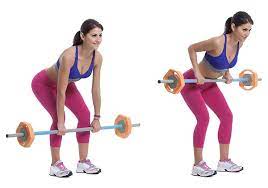
- How to do this strengthening exercise:
- While dumbbells allow the patient to work both sides individually, the barbell allows the patient to lift a heavier weight than he would with separate weights.
- For this exercise, the patient has to grab the barbell with the palms facing the body & tip from the hips until the trunk is at about a 45-50 degree angle.
- The patient does not want to lower the trunk too far due to that can strain the back, especially if the weight is heavy.
- The knees should be flexed to protect the back, take a barbell straight out & then squeeze the back to pull the barbell in towards the umbilicus.
- Repeat for 10-20 repetitions in a session. The patient can also perform this move with the palms out, as in the biceps curl.
Dumbbell Pullovers
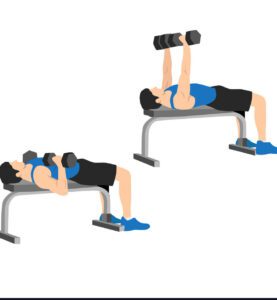
- How to do this strengthening exercise:
- Pullovers are the best exercise owing to they work for multiple muscle groups at the same time, the latissimus, the chest, and the triceps as well. If the patient does them on the physioball, he also contracts the lower limb & core. To start this exercise the patient has to come in a bridge position and grab the weight straight up overhead.
- If the patient is new to this move, start with a lighter weight.
- Keeping the arms extended, & elbows slightly flexed, lower the dumbbells behind you to about head level or as far as you feel comfortable.
- Squeeze the back & slowly pull the weight back to the embarking position, repeating for 12-14 repetitions in one session. Do two sessions in a day.
Renegade Row
- How to do this strengthening exercise:
- To initiate this exercise the patient has to come into the plank position on the hands & toes or knees. Grab two dumbbells with the palms facing each other.
- If this bothers the hands, try just one at a time.
- Holding a plank position for alternate rowing each weight up as well as down for 10-16 repetitions per session. Do two sessions in a day.
- If this is too challenging then do this exercise on the knees, keeping the knees directly under the hips & the hands under the shoulders.
Pull-Ups
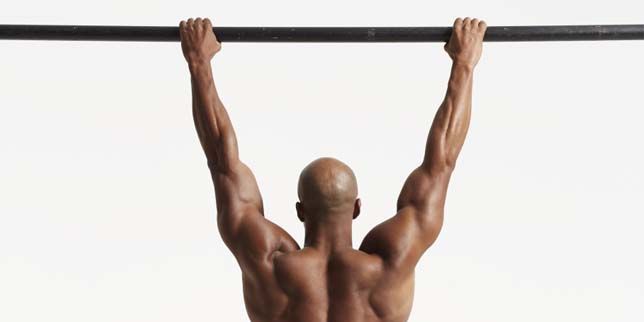
- How to do this strengthening exercise:
- If the patient is new to pull-up exercise, there are ways to modify to motion & slowly build the strength to lift the entire body.
- Embark by putting the chair or even a step stool under a pull-up bar. Put the hands wider than the shoulders, and prop one foot (or both feet if needed) on a chair & use that leverage to pull the body up.
- Lower & repeat for 10 or more repetitions.
- Over time, you can try using less from your lower limb and more from your upper limb.
- Try this modification, Use the table or the chair to pull yourself up into position & then slowly lower yourself down without a chair.
- These are called negatives, which are a great way to build upper limb strength.
Dumbbell Rows
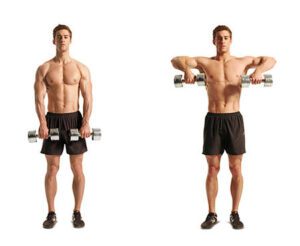
- How to do this strengthening exercise:
- For this exercise, hinge from the hips, the back should be flat & the abdominals engaged.
- The weights (which should be on the heavy side) hang down & you squeeze the back to pull the elbows up to trunk level.
- The patient does not want to yank the dumbbells up, but those back muscles regulate the motion. The elbows should stop just above trunk level.
- Due to the patient being bent over with dumbbells hanging down, the lower back has worked too hard to keep the body neutral.
- Flexed the knees if the patient feels a strain in the lower back & keep the abdominals braced.
One Arm Row

- How to do this strengthening exercise:
- For the single-arm row, you can often go even heavier because now you are supporting your lower back with 1 hand on the other leg, unlike the double-arm rows.
- For this exercise, engage the latissimus as the patient pulls the elbow up to trunk level. At the top, squeeze the shoulder blades together to get more muscles involved. Lower the dumbbells & repeat for 12-16 repetitions on each side.
Seated Rows With Resistance Bands
- How to do this exercise:
- Resistance bands may change the whole rowing exercise. The resistance band gives the patient resistance throughout the exercise, so the muscle fibers will fire just a little differently.
- The patient may perform this exercise standing or even sitting. Wrap the resistance band around a steady object in front of you & hold the handles in both hands. Move back far enough that you have a challenging tension in the band.
- The shoulder should be down, and squeeze the back to row the elbows in, stopping at trunk level. Release & repeat for 12-16 repetitions in one session. Do three sessions per day.
Bent-Over Row With Bands
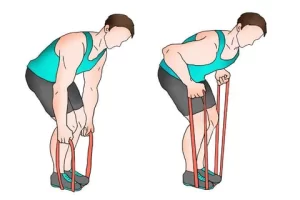
- How to do this strengthening:
- For this exercise, loop a band under both ankles & hold onto the band closer to the feet.
- This will let you get more tension in a band than in holding the handles.
- Keep the back flat & parallel to the floor, pull the elbow up, and stop at trunk level
- Repeat for 10-12 repetitions in one session. This exercise is also great with tempo changes.
Power Plank With Rows
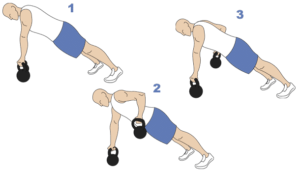
- How to do this strengthening:
- This advanced move hits two muscles with one stone. The plank activates the abdominals, lower back, & lower limb.
- Adding a row means the patient work the core even more since you are balancing a body on a single hand, & you are also working the lattisimus dorsi.
- To start this exercise, come into the plank position on the hands & toes with the feet wide. If the patient wants to modify it, perform this exercise on the knees.
- Hold onto the kettlebell or the dumbbell & pull the elbow up into a row.
- Lower & repeat for 14-18 repetitions during holding a plank the whole time. Take a rest & then switch sides.
Alternating Dumbbell Rows
- How to do this exercise:
- One way to change traditional dumbbell rows is to alternate them from right to left.
- This move activates more core & allows the patient to concentrate on a single arm at a time.
- To start, tip from the hips & keep the back flat. Slowly flexed the left elbow, pulling this up to trunk level.
- Lower & now lift the right elbow into a row.
- Alternate, taking the time with each repetition for 10-15 repetitions.
Straight Arm Pulls
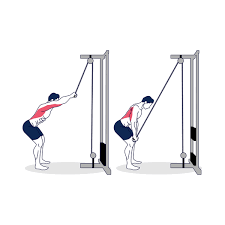
- How to do this strengthening exercise:
- The targets the back muscles, but it utilizes the triceps as well.
- Balance yourself on a ball means the lower back & legs utilize to stabilize the body.
- To perform this exercise, anchor the band around a steady object in front of you & then position yourself with One Arm Row
- How to do this strengthening exercise
- For the single-arm row, you can often go even heavier because now you are supporting your lower back with 1 hand on the other leg, unlike the double-arm rows.
- For this exercise, engage the latissimus as the patient pulls the elbow up to trunk level. At the top, squeeze the shoulder blades together to get more muscles involved. Lower the dumbbells & repeat for 12-16 repetitions on each side.
Barbell Pullovers
- How to do this strengthening exercise:
- Doing this exercise with the barbell increases the intensity of this exercise quite a bit.
- Unlike dumbbell pullovers, the patient will want to keep the elbows flexed the entire time so the patient does not go too far & end up dropping the barbell.
- Start this exercise on a bench & grab the barbell with hands close together just over the rib cage.
- Keeping the elbows flexed, lift a barbell & take the arms back behind the head.
- Contract the back to pull the barbell back to the embarking position & repeat for 10-12 repetitions in one session. Do two sessions per day.

Compound Row
- How to do this strengthening exercise:
- This exercise works the lats, but this also works on the lower back, glutes, as well as hamstrings. The patient may choose a heavier band for this exercise to get the most out of the benefits.
- Firstly Wrap the band around a steady object in front of you & step back until you feel tension on the band.
- Tip from the hips, knees slightly flexed, & abdominals in, keeping the arms extended.
- Stand up and, at the same time, pull the elbows to trunk level in a rowing movement.
- Release & repeat for 10-20 repetitions in one session. Do two sessions per day.
When did the patient not do the Latissimus dorsi strengthening exercise?
- If the healthcare provider advised you to take a rest.
- If the patient is recently undergone any surgery.
- If the arm bone is recently fractured.
- If the patient has a back problem then avoid weight-lifting exercises.
- If exercise is painful please avoid painful exercise.
- The patient needs to listen to the instructions which are given by the therapist very carefully and follow all the instructions of the physical therapist.
FAQ
A weak lats muscle may interfere with bringing the arm toward the body or the body toward the arm. Weakness may also interrupt the ability to laterally flex your trunk. If your lats are tight or short, it will be hard to take your arm up in front of you, or out to the side.
The latissmus dorsi activates anytime you extend the shoulder joint. Meaning, anytime the patient pulls an object toward the body, as if the patient was throwing it behind you, the lats light up.
Sit down on the ground with your legs extended. Loop a resistance band around the middle of the feet, holding an end in each hand. Keep the back straight, fully extend the arms, & then row the elbows until they pass the torso. To better target the lower lats, keep the elbows tucked in at the sides.
Due to bad posture.
And for some, weak lats can actually be at the root of poor posture. “Sitting all the time with bad posture leads to a weak mid & upper back, which is also turning off the abdominal region
Sometimes, the patient may be working on the lats while not being aware of it. The two biggest pointers in activating the lats are to focus on pulling the elbows down to the armpits & doing reps in a controlled manner (this means using lighter weight).
The rhomboids & lats are the main muscles that are weakened by sitting and that can cause: dun, dun, dun, and poor posture. A great exercise for strengthening the muscles of the upper back is the bent-over row.



